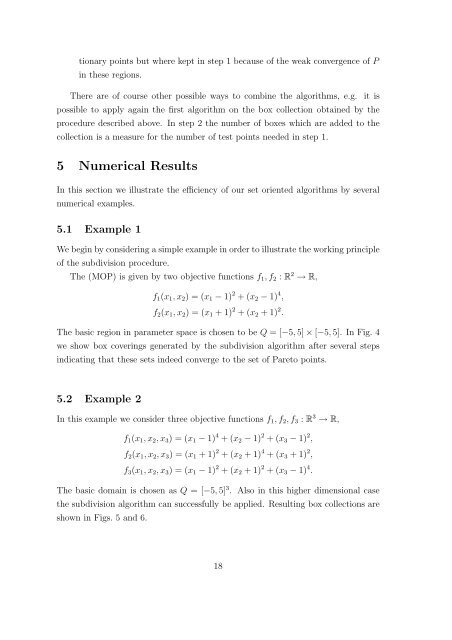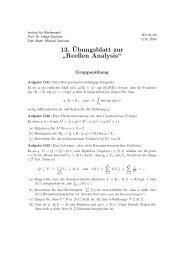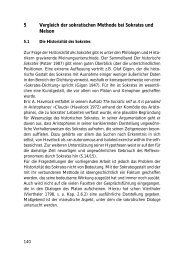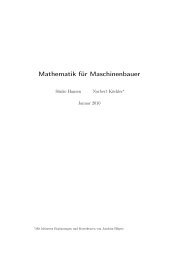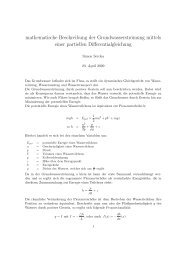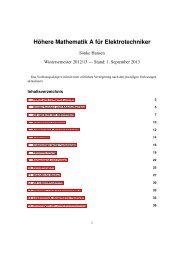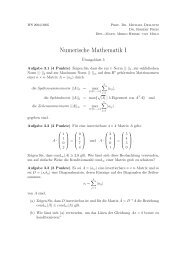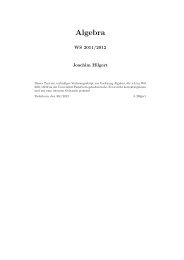Covering Pareto Sets by Multilevel Subdivision Techniques
Covering Pareto Sets by Multilevel Subdivision Techniques
Covering Pareto Sets by Multilevel Subdivision Techniques
You also want an ePaper? Increase the reach of your titles
YUMPU automatically turns print PDFs into web optimized ePapers that Google loves.
tionary points but where kept in step 1 because of the weak convergence of Pin these regions.There are of course other possible ways to combine the algorithms, e.g. it ispossible to apply again the first algorithm on the box collection obtained <strong>by</strong> theprocedure described above. In step 2 the number of boxes which are added to thecollection is a measure for the number of test points needed in step 1.5 Numerical ResultsIn this section we illustrate the efficiency of our set oriented algorithms <strong>by</strong> severalnumerical examples.5.1 Example 1We begin <strong>by</strong> considering a simple example in order to illustrate the working principleof the subdivision procedure.The (MOP) is given <strong>by</strong> two objective functions f 1 ,f 2 : R 2 → R,f 1 (x 1 ,x 2 )=(x 1 − 1) 2 +(x 2 − 1) 4 ,f 2 (x 1 ,x 2 )=(x 1 +1) 2 +(x 2 +1) 2 .The basic region in parameter space is chosen to be Q =[−5, 5] × [−5, 5]. In Fig. 4we show box coverings generated <strong>by</strong> the subdivision algorithm after several stepsindicating that these sets indeed converge to the set of <strong>Pareto</strong> points.5.2 Example 2In this example we consider three objective functions f 1 ,f 2 ,f 3 : R 3 → R,f 1 (x 1 ,x 2 ,x 3 )=(x 1 − 1) 4 +(x 2 − 1) 2 +(x 3 − 1) 2 ,f 2 (x 1 ,x 2 ,x 3 )=(x 1 +1) 2 +(x 2 +1) 4 +(x 3 +1) 2 ,f 3 (x 1 ,x 2 ,x 3 )=(x 1 − 1) 2 +(x 2 +1) 2 +(x 3 − 1) 4 .The basic domain is chosen as Q =[−5, 5] 3 . Also in this higher dimensional casethe subdivision algorithm can successfully be applied. Resulting box collections areshown in Figs. 5and 6.18


